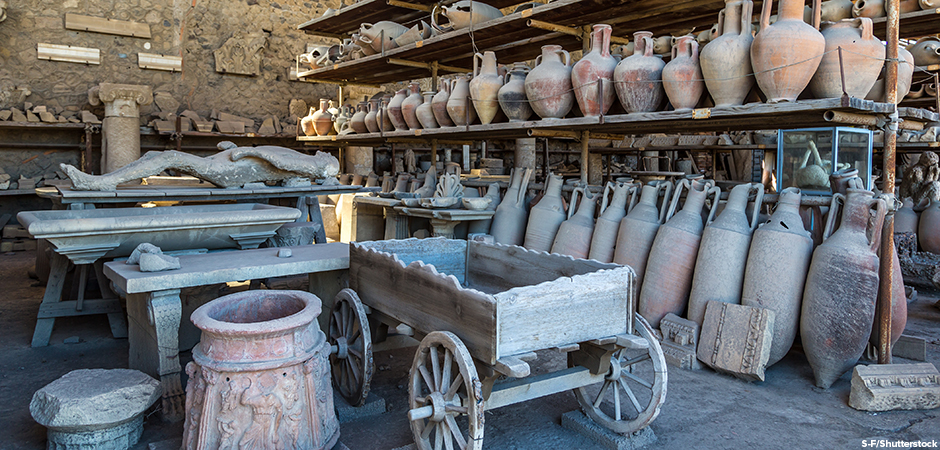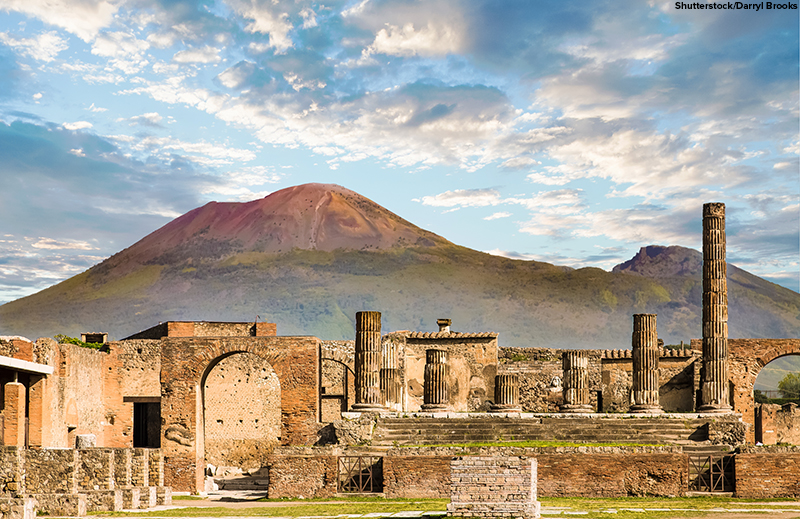
When the Italian volcano Mount Vesuvius erupted in 79 C.E., molten rock and ash buried nearby cities and everything in them. About 16,000 people may have died in the explosion, though the exact number of casualties is unknown. Since the 1700s, archaeologists have been uncovering and exploring the cities of Pompeii and Herculaneum that were buried by Vesuvius’ volcanic ash. Now, researchers are using innovative technologies to understand what was preserved in the ruins.

The Vesuvius Challenge
Thousands of artifacts have been discovered at these archaeological sites. However, many of the artifacts have been considered too fragile for study. Some of these artifacts include documents written on an early form of paper called papyrus. The scrolls were preserved for nearly two thousand years in heaps of ash. Scientists have tried to examine these scrolls since their discovery in the 1700s. However, attempts to read them by physically unrolling the scrolls caused them to fall apart.
In March 2023, a worldwide competition began in which participants used modern technology to read the scrolls. The Vesuvius Challenge was conceived by computer scientist Brent Seales and entrepreneurs Nat Friedman and Daniel Gross. The competition involved the use of computer scanning and machine learning to decipher, or translate, the texts without physically touching them. (Machine learning is a field of study dedicated to training artificial intelligence to think in a similar way to humans.) The competition offered substantial prize money for achieving set milestones. On February 9, 2024, the winners of the prize were announced.
The winning team consists of Youssef Nader, a machine learning student in Germany; Julian Schilliger, a robotics student in Switzerland; and Luke Farritor, a computer science student in Nebraska. Their work earned them a prize of $700,000. These students used artificial intelligence to interpret writings from an ancient scroll known as the Herculaneum papyri. This document was part of a collection found in an ancient Roman villa in the ruins of the city of Herculaneum. The collection was believed to have been owned by Julius Caesar’s father-in-law.
Deciphering Scrolls with Artificial Intelligence
The winning team’s accomplishment exceeded expectations. After careful scans of the rolled-up scrolls were made, team members programmed AI algorithms to decode words from the compressed paper. Their program was a success, and they were able to view and translate more characters than were required for the grand prize. They successfully decoded over 2,000 Greek letters from the scanned images. Despite figuring out only a small portion of the scroll, their progress provides valuable insight into its content. Scholars believe the scrolls may contain philosophical discussions on life’s pleasures.
Organizers plan to expand the challenge in 2024. They plan to decipher additional scrolls from the Herculaneum collection. Success in future scans could potentially reshape our understanding of the ancient world and offer new perspectives on this key period of history.
